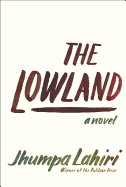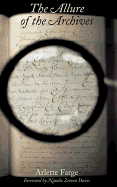 |
| photo: Don Strel |
Anne Hillerman, the eldest of author Tony Hillerman's six children, grew up in a household full of characters, adventures and, most importantly, shared stories. Like her father, Anne began her career in journalism, working as editorial page editor for the Albuquerque Journal North and the Santa Fe New Mexican, and as an arts editor for both papers. She now writes weekly restaurant reviews for the Albuquerque Journal. She's also a director of Wordharvest Writers Workshops and the Tony Hillerman Writers Conference.
Anne Hillerman is the author of Tony Hillerman's Landscape: On the Road with Chee and Leaphorn (honored as the best photo book of 2010 by the Mountains and Plains Independent Booksellers Association) and eight other nonfiction books. Following in her father's footsteps, she has now written a mystery, Spider Woman's Daughter (see our review below).
When you were growing up, were your father's characters part of your life, like invisible family members?
Yes. Especially if dad was thinking through a new book we might talk about it and the characters over dinner. Leaphorn and Chee especially were like family members. My uncles. They were great additions to our family.
Did your dad have plans for a new Leaphorn and Chee novel?
No. Dad was thinking about writing a nonfiction book of tips for would-be authors based on questions he had been asked over the years, but was still in the research stage. He talked now and then about a new Leaphorn/Chee novel that would somehow have involved mercury mining and water poisoning, but never got any words into the computer.
Your father's knowledge of Navajo history and traditions is well known. Is this a passion of yours too?
Yes. I share his deep respect for the Navajo people and their resilience, their adaptability and their deep-seated generosity. And I love the beautiful landscape of the Navajo Nation.
Did you feel any sense of trepidation taking on this series? What was that decision like?
Trepidation? I did feel a bit nervous about it. I know that my dad's fans have high expectations and certain preconceptions of what any new book in the series should be like--big shoes to fill.
After I got over the first wave of grief at his death, I realized I was also grieving for the end of the series. I loved those stories and the characters he invented to tell them. Meanwhile, I had a couple of writer friends who avidly encouraged me to continue the series. I asked my mom what she thought of the idea and she was all for it. So, with all those cheerleaders, I decided to write a book in my father's tradition.
Once I had been working for a few months on the book that became Spider Woman's Daughter, I decided that it might have potential. At that point I contacted dad's editor, Carolyn Marino at HarperCollins, to make sure that I wouldn't run into copyright problems using his characters. She told me to go ahead and volunteered to take a look at what I was writing when I felt I was ready. That also encouraged me.
 This is your first novel. What were some of the challenges you faced as you plunged into your dad's fictional world? What was the most difficult thing about writing the book?
This is your first novel. What were some of the challenges you faced as you plunged into your dad's fictional world? What was the most difficult thing about writing the book?
I had worked on two unpublished novels before, writing one--a coming-of-age, historical, young adult novel--into a couple decent drafts. I also organize the Tony Hillerman Writers Conference each November in Santa Fe, so I had listened to many fine writers, including my dad, talk about their writing process, creating character, building suspense, plotting, etc. But that kind of knowledge and the process of sitting down every day and creating a book from start to climax are different animals. I had the challenge and the gift of working within the mystery genre framework and understanding some of what the readers' expectation would be. On top of that, I had the advantage and challenge of inheriting established characters that had been refined over the years.
It's hard to say what was most difficult, because the parts of the book that challenged me the most also gave me the most joy when I figured out how to handle them. Perhaps the most difficult thing for me, a natural multi-task junkie, was saying no to volunteer work, freelance jobs, social invitations and other projects so I could do the best job possible on Spider Woman's Daughter.
What differences do you see between your Leaphorn and Chee novel/characters and your father's?
Wow! It's hard to answer this question without giving away too much of the plot. I'll just say that Leaphorn plays a far different role in this book than he did in my father's final novel, The Shape Shifter. And Jim Chee is learning to cook.
Stylistically, are you making a special effort to replicate his style, or do you use your own writing style?
I did not make a conscious effort to replicate his style. I re-read his books many times in preparation for selecting the sites to be photographed in Tony Hillerman's Landscape: On the Road with Chee and Leaphorn, my nonfiction book about him and his work. I re-read them again as part of my research for Spider Woman's Daughter. His use of language definitely influenced me. Tony had a wonderful innate appreciate for the power and beauty of words, and I hope I was educated and inspired by that. But I'm my own person, a writer of columns, restaurant reviews and other nonfiction for many years, so I have developed my own style. Spider Woman's Daughter is a melding of my heritage from my father and my own experience as a professional writer.
Why did you decide to give Bernadette "Bernie" Manuelito, Jim Chee's wife and a Navajo Tribal Police officer, center stage in your novel?
Bernie was my inspiration for the book. After Skeleton Man, in which she plays her biggest role in the previous books, I mentioned to dad that I'd like to see her become more of a crime-solving partner to his two main detectives. He didn't argue with me, but he was at work then on what became his final novel, his farewell to Lt. Leaphorn. I figured he had left it to me to develop Bernie's story, to give her an opportunity to save the day. One of my main goals with Spider Woman's Daughter was to further develop Manuelito so the readers could appreciate her as more than just Jim Chee's girlfriend-turned-wife and Joe Leaphorn's eager protégée. I wanted to show Manuelito as a capable, savvy and brave police officer.
You're inheriting a beloved series by a fine writer. Still, it's your book. Will you take the series in any new directions? Will we be seeing new, regular characters from you?
These are wonderful questions. I am honored to continue such a beloved and popular series and will continue in subsequent books to give Bernie a bigger role than my father did. I'm having fun with Bernie's little sister, Darleen, and with developing the character of her mother and a cousin, another Navajo police officer. And I am thinking of the next adventure. Stay tuned.
Did your father have a favorite Leaphorn and Chee novel?
I think his favorite was usually the one he had just finished. I know he was especially pleased with A Thief of Time, which was part of the inspiration for Spider Woman's Daughter, and with Skinwalkers and Dance Hall of the Dead. But for him, comparing them would have been like comparing his six children. Each of us has our strengths and quirks. --Tom Lavoie, former publisher
Anne Hillerman: Continuing a Beloved Series
 Enzo has a spot on the staff pick display at Book Passage, in San Francisco, and while he's taught us all about The Art of Racing in the Rain, he's helped some pals gain traction in sales, too. His "staff recommends" card for A Dog's Journey by W. Bruce Cameron states: "I want you to read this book about my pals Buddy, Molly, Max and more. It's the best book on dog devotion since The Art of Racing in the Rain. Enzo." Sales of both books are steady. (No doubt Enzo is looking forward to Cameron's next book, The Dogs of Christmas, due October 15.)
Enzo has a spot on the staff pick display at Book Passage, in San Francisco, and while he's taught us all about The Art of Racing in the Rain, he's helped some pals gain traction in sales, too. His "staff recommends" card for A Dog's Journey by W. Bruce Cameron states: "I want you to read this book about my pals Buddy, Molly, Max and more. It's the best book on dog devotion since The Art of Racing in the Rain. Enzo." Sales of both books are steady. (No doubt Enzo is looking forward to Cameron's next book, The Dogs of Christmas, due October 15.)



 This is your first novel. What were some of the challenges you faced as you plunged into your dad's fictional world? What was the most difficult thing about writing the book?
This is your first novel. What were some of the challenges you faced as you plunged into your dad's fictional world? What was the most difficult thing about writing the book?










